A circuit has a section ABC if the potential at point A,BandC are V1,V2andV3 respectively , calculate the potential at point O
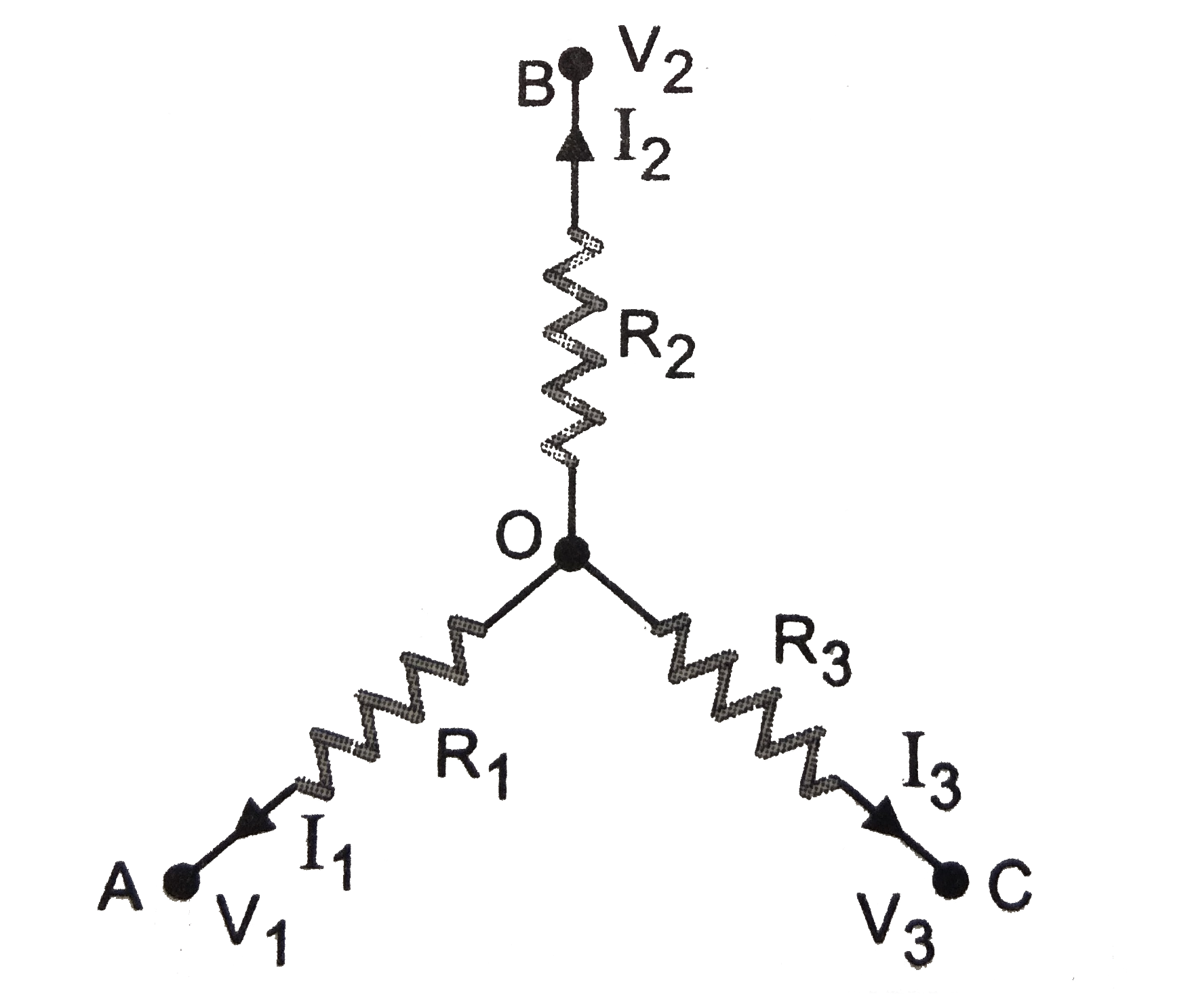
The correct Answer is:[(V_(1))/(R_(1)) + ( V_(2))/(R_(2)) + V_(3))/(R_(3))][(1)/(R_(1)) +(1)/(R_(2)) + (1)/(R_(3))]^(-1)
According to kirchhoff's first rule at O
−l1−l2−l3=0orl1+l2+l3=0…..(i) If V0 is the electric potential at O
V1,V2andV3 be the potential at A,BandC respectively then V0−V1=l1R1
V0−V2=l2R2andV0−V3=l3R3
This , l1=(V0−V1R1,l2=(V0−V2R2
and l3=(V0−V3R3
putting valume of l1,l2andl3in (i)( we get
V0−V1R1+V0−V2R2+VV0−V3R3=0
or V0[1R1+1R2+1R3]−V1R1+V2R2+V3R3⎤⎥⎦=0
or V0=V1R1+V2R2+V3R3⎤⎥⎦[1R1+1R2+1R3]−1
Similar Questions
The arrangement shows a part of complete circuit. The potentials at point A and B are V1 and V2 respectively . Find the potential at point P.

Strategy : The two capacitors C1 and C2 are connected in series . Therefore the charge on both of the capacitors is same . Let the potential at P is V .
View SolutionThree capacitors C1,C2 and C3 are connected as shown in, The potentials of P,Q, and R are V1,V2, and V3, respectively. Find the potential V0 at the functionO.
 .
.
View Solution
Knowledge Check
Three resistance are joined together to form a letter Y, as shown in figure. If the potentials of the terminals A,B and C are 6V,3V and 2V respectively, then the potential of the point O will be
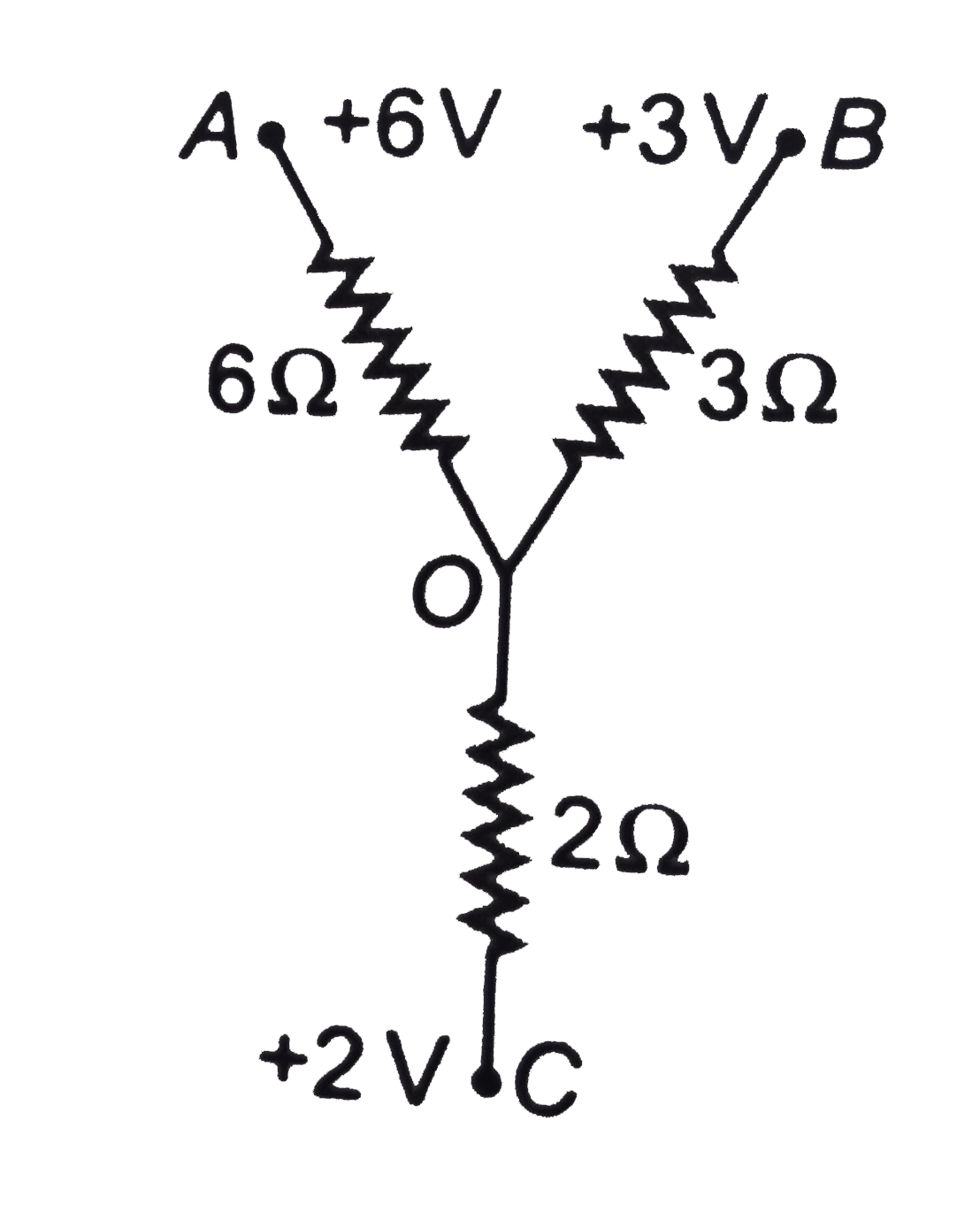 A4VB3VC2.5VD0V
A4VB3VC2.5VD0VThree uncharged capacitors of capacities C1,C2 and C3 are connected as shown in the figure to one another and the potentials V1,V2 and V3 respectively. Then the potential at O will be
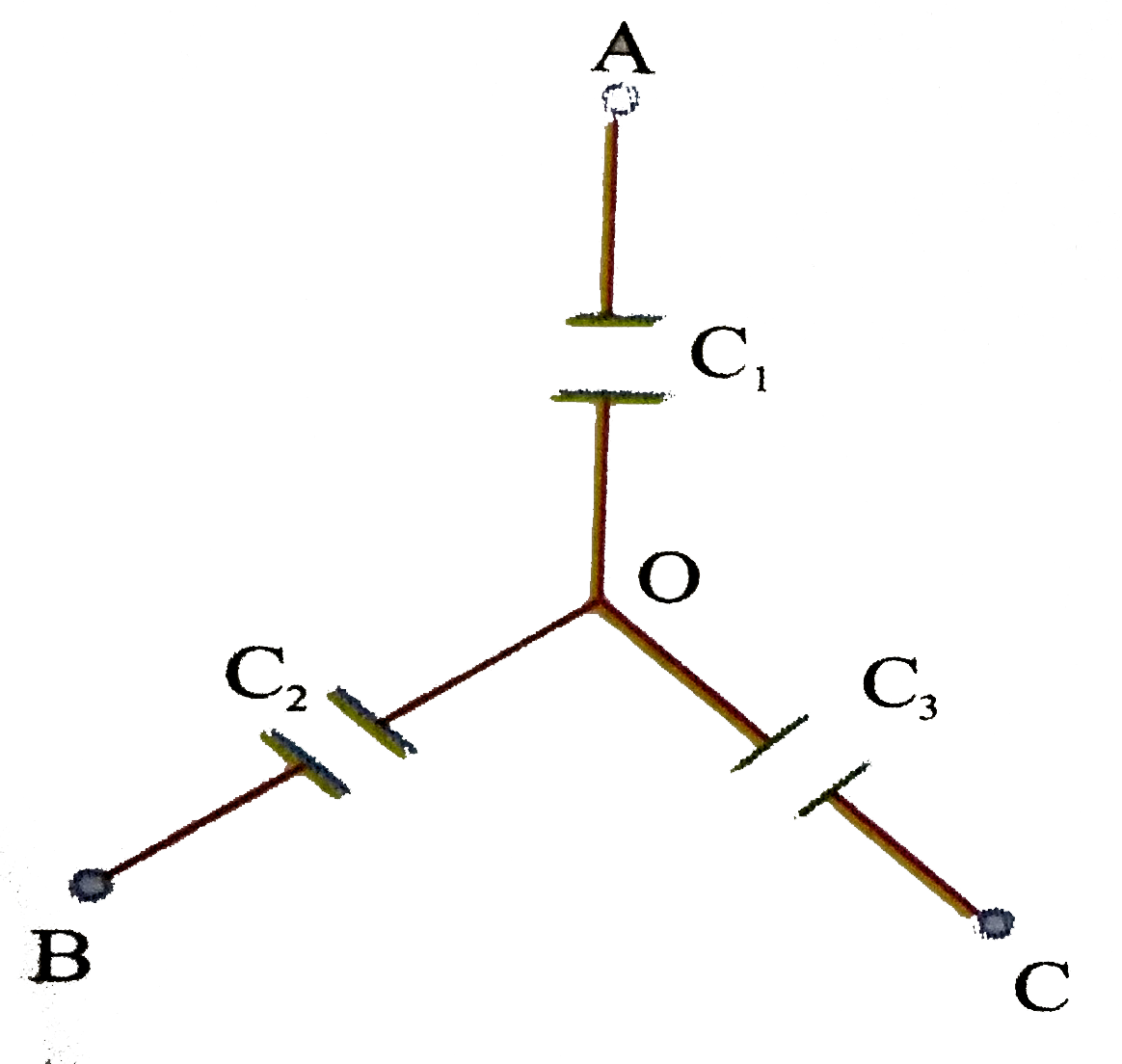 .AV1C1+V2C2+V3C3C1+C2+C3BV1+V2+V3C1+C2+C3CV1(V2+V3)C1(C2+C3)DV1V2V3C1C2C3
.AV1C1+V2C2+V3C3C1+C2+C3BV1+V2+V3C1+C2+C3CV1(V2+V3)C1(C2+C3)DV1V2V3C1C2C3A network of resistance is constructed with R1andR2 as shown in fig. The potential at the points 1,2,3 …., N are V1,V2,V3,…,Vn, respectively, each having a potential k times smaller then the previous one.

The ratio R2/R3 isA(k−1)2kBk2−1kCkk−1Dk−1k2
A uniform electric field exists in a region of space. Potential at potential O,A,B and C are V0=0 and VA=−1V,VB=−6V and VC=−3V respectively. Alll the cubes shown in fig have side length of 1m. ltbr> (a). Find VP−VQ
(b). Find the smallest distance of a point from O where the potential is −2V
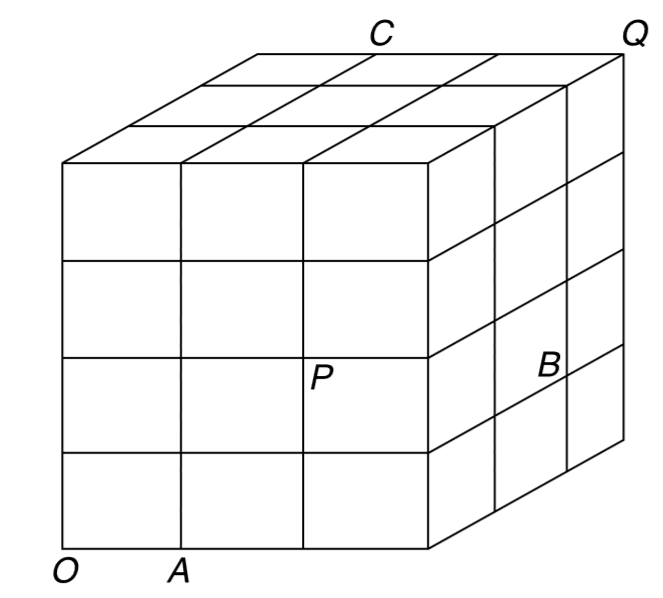
View SolutionFind the potential difference between points A and B (VB−VA) in the network

View Solution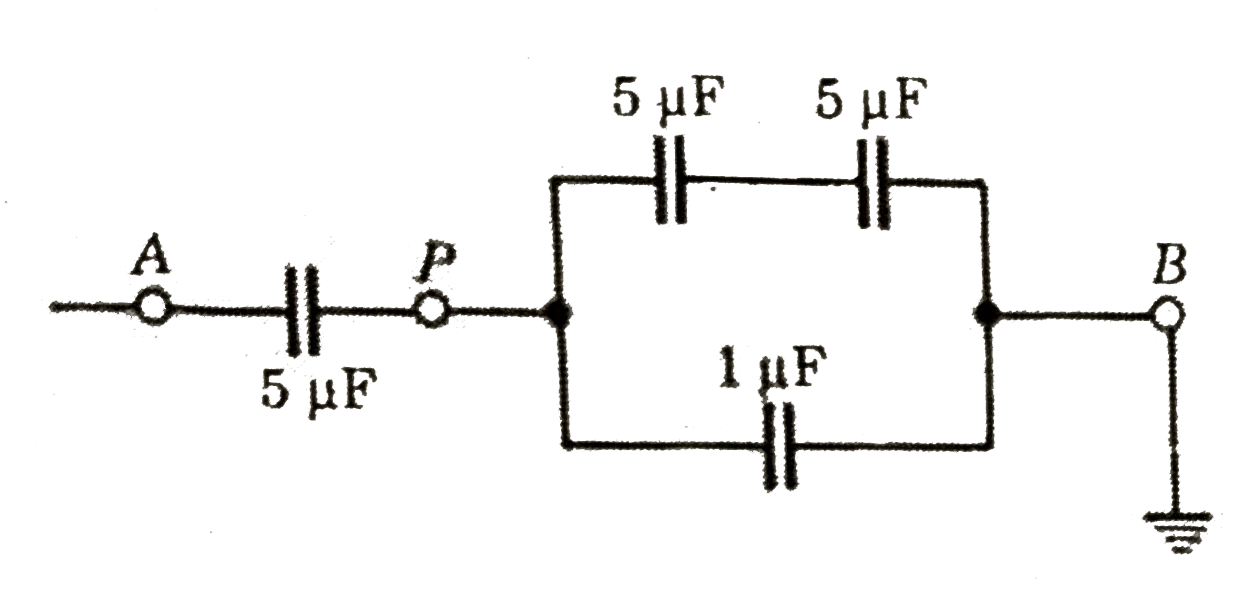
In the circuit shown in figure. If point B is earthed and A is kept at 1500 V, then calculate the potential at the point P.
View SolutionShown a part of an electric circuit, The potentials at the points a,b,and c are 30V,12V,and 2V respectively.Find the currents through the three resistors.

View SolutionIn the given network, the potential at point O is (Given VO=Vs=18V)

View Solution

